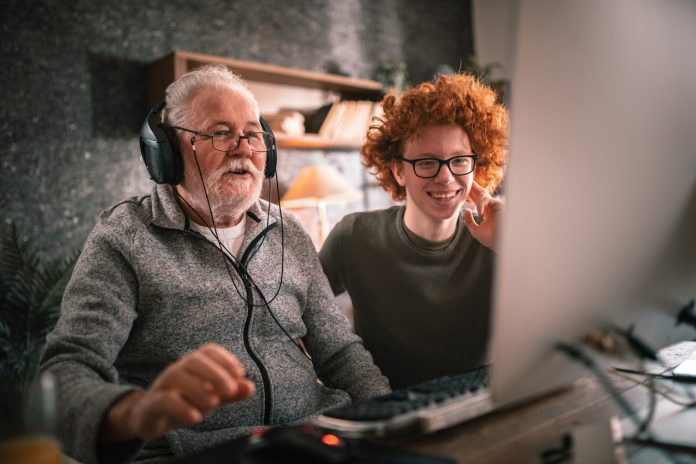Focusing on information and communication technologies, Dr Cosmas Luckyson Zavazava, Director of ITU’s Telecommunication Development Bureau, outlines opportunities associated with population ageing and the importance of creating a digitally inclusive, user-friendly environment that supports older individuals
The number of older people is rising fast, with sixty-year- olds outnumbering children under five for the first time in human history. Demographic experts say that countries of all economic levels are facing this shift. Right around the corner, in 2050, one in six people in the world will be over 65. In 2019, that ratio was one to 11.
ICTs: An enormous advantage for upcoming generations of older people
Since we are all getting older – and staying older longer – it is in everyone’s interest to build a world where people over 65 can flourish. Information and communication technologies (ICTs) will be fundamental to helping us adapt.
Tools like Artificial Intelligence, smart homes and robot assistants – along with the innovations still simmering in imaginations all over the world – offer us enormous advantages over previous generations of older people. ICTs that are designed in accordance with digital accessibility requirements hold the power to ease some of the difficulties of ageing and protect older people from abuse, neglect, and isolation. They can also make our post-65 years richer, more productive, prosperous, and participatory.
The International Telecommunication Union (ITU) is working across sectors – developing guidelines, sharing best practices, providing training, and creating age- friendly digital environments – so that all people are equipped to get the very most out of these technologies as they emerge. We envision a world where devices are easy to obtain and designed with everyone in mind, and all users have ready access to continuing skills training and a good Internet connection.
The alternative – being unconnected – carries more risks to older individuals and their communities with every passing year. A person left behind by the advance of digital technology is very likely to struggle with once- familiar tasks like shopping, handling money matters, making appointments, getting a ride, or simply ordering food for delivery – because those services have gone online. That person might miss out on health information and services or find it difficult to communicate with family and friends. These constant frustrations can lead to low self-esteem, loneliness, and depression.
ICTs for older people are by no means only about managing decline; they are powerful tools that allow communities to harness the wisdom, talent, energy and economic power of a significant portion of the population. The silver economy, which includes all economic activities related to the needs of older adults, is estimated to be worth around US$ 17 trillion, according to the Global Coalition on Aging.
Digital inclusion: Going from vulnerable to valuable
Working toward a more digitally inclusive world is a major objective of the ITU Telecommunication Development Bureau, as reaffirmed by the Kigali Action Plan, a component of ITU’s 2022-2025 strategy. Sections of the Plan spell out the urgent need for age-friendly digital environments, digital literacy programmes tailored to the needs of older people, and access to/use of digital devices.
Our report, ‘Ageing in a digital world – from vulnerable to valuable’ demonstrates how our organization has been bringing those directives to life. The report offers insights on how digital technologies can make older people more connected and valued, with actionable recommendations for tech developers, service providers, and policy- and decision-makers.
Through ITU Academy courses, Member States, stakeholders, and policymakers are receiving guidance on how to make older populations digitally savvy and meaningfully connected.
As a key partner in the Decade of Healthy Ageing initiative (2021-2030), a broad, UN-wide effort, we have been promoting and implementing a range of accessible technologies: screen readers and text-to- speech software for older people with vision disability; voice-to-text virtual assistants for people with dexterity or hearing impairments; wearable health-monitoring devices that connect to healthcare professionals; Artificial Intelligence for early detection of diseases; and digital platforms to boost social connection. ITU collaborated on the initiative’s publication, ‘Social isolation and loneliness among older people’, which provides strategies to reduce the harms of
social isolation and loneliness among older people.
We are also active in the Mainstreaming Knowledge on Ageing initiative. This effort, launched in 2022, is working to create inclusive digital environments and improve the lives of older people. Ten UN agencies and many organizations representing older people are lending their expertise to the initiative.
Finding digitally inclusive solutions requires a mix of viewpoints and expertise
The wave of population ageing that started in high- income countries has spread to middle-income countries. Brazil, China, India, Thailand, and many other countries are confronting the challenge of digital inclusion for older citizens.
ITU’s Regional Office for Asia and the Pacific recently organized a special event in Thailand – where life expectancy has climbed from 63 in 1978 to 79 in 2021 – in which stakeholders presented ideas for equipping older people with the digital skills and tools they need to be engaged, independent citizens. The information session included representatives from governments, academia, NGOs, UN agencies, and others. Japan’s Juntendo University shared insights from its study on Digitally Inclusive, Healthy Ageing Communities, exploring how digital inclusion can support healthy ageing in Japan, the Republic of Korea, Singapore, and Thailand.
These types of exchanges, offering a good mix of viewpoints and expertise, are integral to understanding the needs of older people and tailoring new tools to their needs. Their urgency will increase as time goes by.
We cannot change demographic trends, but by working together, we can confidently meet the challenges they present. Sooner or later, we will all reap the reward: a world of opportunities, not frustrations.











